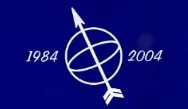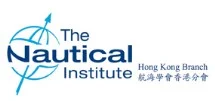May92
archive > Log > Log1992
Hong Kong
Port development

TONY CLARK, secretary of the Hong Kong Port Development Board (PDB), spoke on Hong Kong Port Development, a very topical subject with the implementation of the port and airport development plan (PADS) in Hong Kong, which will certainly continue to dominate activities and conversations for some years to come.
The speaker started by describing how and why PDB have had to devise a strategic development plan for Hong Kong and how they are making sure that the plan is implemented and regularly reviewed to take account of changes in patterns of trade, cargoes and ships.
Without the port, Hong Kong would be a very different place. For better or worse the British would never have come and rice would still be grown here. But the port is here-it has a profound effect on Hong Kong; it's the source of HK's economic development and the key to the industrialisation of the Pearl River Delta.
In 1990 the port moved more than 17 million international passengers and 75 million tonnes of cargo. A further 100 million passengers took local ferry journeys within Hong Kong waters.
Mr Clark then concentrated on the trading port, for that's what PADS is really all about. The 75 million tonnes of cargo passing through the port in 1990 was three times the throughput only a little over a decade ago. The scale of the additional facilities needed to keep pace with the growth of that order is enormous; and getting more so. The port policy, however, is simple. It is to provide port handling facilities sufficient to match cargo demands; for those facilities to be built, paid for and operated by the private sector and for the port to continue to optimise its contribution to HK's economy.
When the container revolution started in earnest in the early seventies, Hong Kong was one of the first major ports to react. It built three terminals at Kwai Chung, making use of the deep water and the road system then being put in for the 'new' town at Kwai Chung. It was an ideal site-room for expansion as future demand built. That demand was slow in coming.
Demand eventually bucked up and by the early eighties there were capacity problems. By the mid-eighties it would be seen that the limitless potential of the Kwai Chung port was not limitless after all. Once terminal development bumped into Stonecutters Island, where would it go next? This started the ball rolling that eventually led to PADS.
The key port objectives of PADS were:
a) To provide facilities to meet the port cargo growth forecasts for the next 20 years;
b) To ensure that all port and associated transport networks are provided to a coherent and integrated plan; and
c) To form the centre of development programmes to enhance and sustain Hong Kong's future growth potential, particularly, as a maritime and commercial centre.
The outcome is a long-term strategic plan for port development into the next century. He then highlighted the key points:
• Incremental container terminal development, matching supply with demand, until space runs out at Kwai Chung;
• Then development continues on man-made port peninsula on Lantau which, by then, is linked by bridge to the mainland;
• When this peninsula is sufficiently close to HK Island and when the bridge traffic is approaching design capacity, a new road link (to HK Island, near Green Island) should be introduced thus completing the circle;
• The natural sheltered harbour with its buoys and anchorages remain as is, with cargoes coming ashore at the various private and public cargo working areas;
• Once these working areas are saturated, then a new river trade terminal at Tuen Mun (western edge of Hong Kong territory) comes into operation;
• The development opportunities for port or deepwater front industry offered at Kai Tak (once the airport there closes) and at Junk Bay should be seized; and a new breakwater will be built between Lamma Island and Cheung Chau to provide shelter for the port peninsula and to create additional sheltered anchorage.
He concluded by saying that merchandise trade through Hong Kong is increasingly containerised; even though Hong Kong's own manufacturing base may not be growing, its productivity is increasing. But the significant increase in throughput will come from the industrial output of the Pearl River Delta and beyond. Hong Kong is the only realistic outlet for most of that output. Even if today's very high growth rates decline, the port of Hong Kong and all those service industries associated with ports, cargoes and shipping should have an extremely busy time over the next couple of decades.
Contributed by P.R. Owen, FNI
Seaways May 1992

